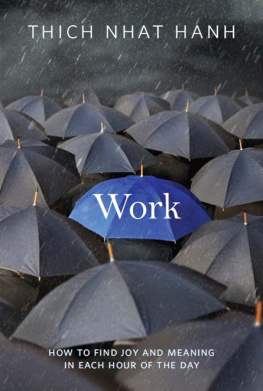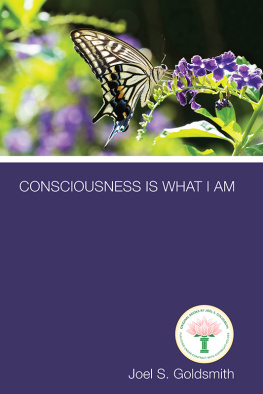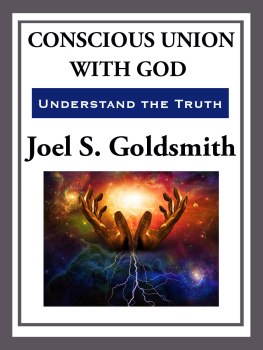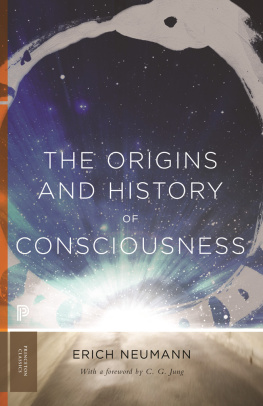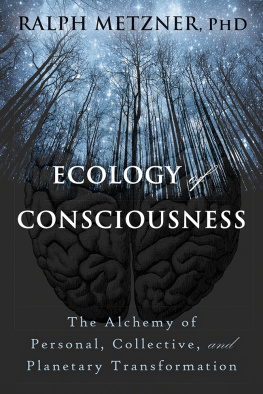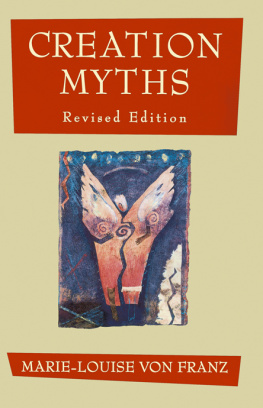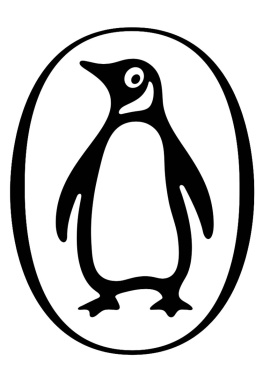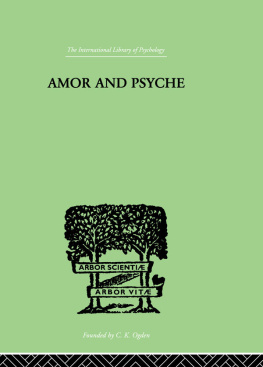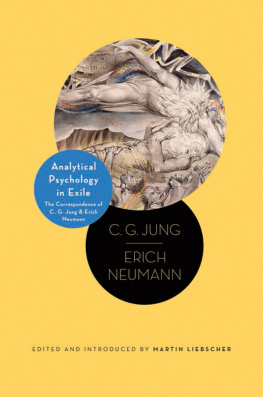The International Library of Psychology
THE ORIGINS AND HISTORY OF CONSCIOUSNESS
Founded by C. K. Ogden
The International Library of Psychology
ANALYTICAL PSYCHOLOGY
In 12 Volumes
| I | Studies in Analytical Psychology | Adler |
| II | Complex/Archetype/Symbol in the Psychology of C G Jung | Jacobi |
| III | Psychology of C G Jung | Jacobi |
| IV | Experiment in Depth | Martin |
| V | Amor and Psyche | Neumann |
| VI | Art and the Creative Unconscious | Neumann |
| VII | The Origins and History of Consciousness | Neumann |
| VIII | Jungs Psychology and its Social Meaning | Progoff |
| IX | Religion and the Cure of Souls in Jungs Psychology | Schaer |
| X | Conscious Orientation | van der Hoop |
| XI | Lucifer and Prometheus | Werblowsky |
| XII | The Secret of the Golden Flower | Wilhelm |
THE ORIGINS AND HISTORY
OF CONSCIOUSNESS
ERICH NEUMANN
Foreword by C G Jung

First published in 1954 by
Routledge
Reprinted in 1999, 2002 by
Routledge
2 Park Square, Milton Park, Abingdon, Oxon, OX14 4RN
Simultaneously published in the USA and Canada by Routledge
711 Third Avenue, New York, NY 10017
Transferred to Digital Printing 2007
Routledge is an imprint of the Taylor & Francis Group
First issued in paperback 2013
1954 by Bollingen Foundation/Princeton University Press
Translated from the German by R F C Hull
Reprinted by permission of Princeton University Press
All rights reserved. No part of this book may be reprinted or reproduced or utilized in any form or by any electronic, mechanical, or other means, now known or hereafter invented, including photocopying and recording, or in any information storage or retrieval system, without permission in writing from the publishers.
The publishers have made every effort to contact authors/copyright holders of the works reprinted in the International Library of Psychology. This has not been possible in every case, however, and we would welcome correspondence from those individuals/companies we have been unable to trace.
These reprints are taken from original copies of each book. In many cases the condition of these originals is not perfect. The publisher has gone to great lengths to ensure the quality of these reprints, but wishes to point out that certain characteristics of the original copies will, of necessity, be apparent in reprints thereof.
British Library Cataloguing in Publication Data
A CIP catalogue record for this book is available from the British Library
The Origins and History of Consciousness
ISBN 978-0-415-20944-1 (hbk)
ISBN 978-0-415-86430-5 (pbk)
He whose vision cannot cover
Historys three thousand years,
Must in outer darkness hover,
Live within the days frontiers.
GOETHE, Weststlicher Diwan
THE PRESENT EDITION of this book contains the authors corrections and revisions of his original text. Certain minor omissions, mostly of repetitive material, have been made with his permission, and a few small passages added in connection with the illustrations, which the author has assembled for this edition.
Quotations are in most cases taken from or based upon the standard English or American translations indicated in the footnotes; but where it was necessary to translate directly from the German texts cited by the author, reference is made to the German sources only.
I would like to express my most cordial thanks to Dr. Gerhard Adler for his help in elucidating many difficult passages in the text, and for his careful revision of the translation in typescript.
R. F. C. HULL
GRATEFUL ACKNOWLEDGMENT for permission to quote is made to the following: the Cambridge University Press for illustrations and text passages from J. M. Woodward, PERSEUS; The Dial Press, New York, for the prefatory motto, from THE PERMANENT GOETHE, edited by Thomas Mann, copyright 1948 by The Dial Press; Harrap and Co., London, for a passage from J. C. Andersen, MYTHS AND LEGENDS OF THE POLYNESIANS; the Princeton University Press for a part of E. A. Speisers translation of the Gilgamesh Epic, from ANCIENT NEAR EASTERN TEXTS, edited by J. B. Pritchard; to Routledge and Kegan Paul, London, for a passage from E. A. Wallis Budges translation of the Egyptian Book of the Dead; and to the Viking Press, New York, for D. H. Lawrences poem The Ship of Death, from his LAST POEMS, copyright 1933 by Frieda Lawrence.
CONTENTS
BY C. G. JUNG
Frontispiece:
THE UROBOROS
The Birth of Vishnu. India, illustration from an 18th-century manuscript. (Paris, Bibliothque nationale. Photo: Bibliothque.)
Following page 32:
Following page 64:
THE GREAT MOTHER
Following page 106:
THE SEPARATION OF THE WORLD PARENTS
Following page 144:
THE HERO MYTH
Following page 240:
TRANSFORMATION, OR OSIRIS
T HE AUTHOR has requested me to preface his book with a few words of introduction, and to this I accede all the more readily because I found his work more than usually welcome. It begins just where I, too, if I were granted a second lease of life, would start to gather up the disjecta membra of my own writings, to sift out all those beginnings without continuations and knead them into a whole. As I read through the manuscript of this book it became clear to me how great are the disadvantages of pioneer work: one stumbles through unknown regions; one is led astray by analogies, forever losing the Ariadne thread; one is overwhelmed by new impressions and new possibilities, and the worst disadvantage of all is that the pioneer only knows afterwards what he should have known before. The second generation has the advantage of a clearer, if still incomplete, picture; certain landmarks that at least lie on the frontiers of the essential have grown familiar, and one now knows what must be known if one is to explore the newly discovered territory. Thus forewarned and forearmed, a representative of the second generation can spot the most distant connections; he can unravel problems and give a coherent account of the whole field of study, whose full extent the pioneer can only survey at the end of his lifes work.
This difficult and meritorious task the author has performed with outstanding success. He has woven his facts into a pattern and created a unified whole, which no pioneer could have done nor could ever have attempted to do. As though in confirmation of this, the present work opens at the very place where I unwittingly made landfall on the new continent long ago, namely the realm of matriarchal symbolism; and, as a conceptual frame-work for his discoveries, the author uses a symbol whose significance first dawned on me in my recent writings on the psychology of alchemy: the uroboros. Upon this foundation he has succeeded in constructing a unique history of the evolution of consciousness, and at the same time in representing the body of myths as the phenomenology of this same evolution. In this way he arrives at conclusions and insights which are among the most important ever to be reached in this field.



